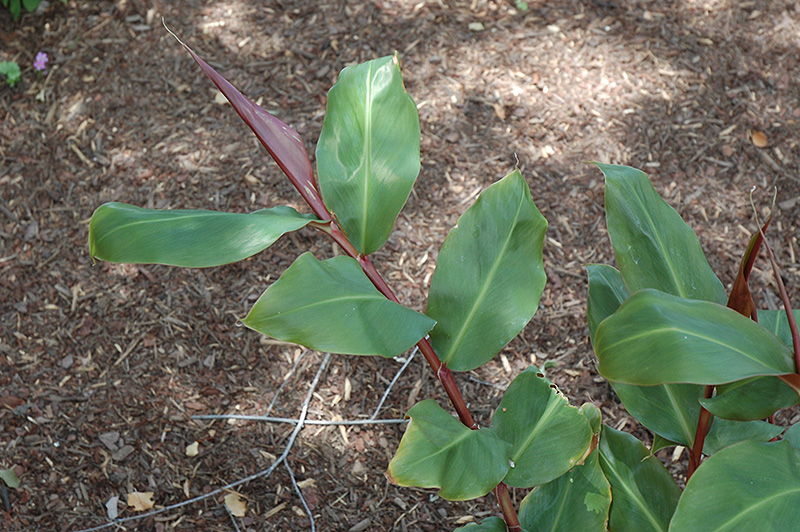Height: 4 feet
Spread: 24 inches
Sunlight:
![]()
![]()
Hardiness Zone: 7b
Other Names: Fire Ginger, Ginger Lily, Garland Lily
Description:
The only variety with significant color in the leaves that are medium green with maroon undersides; stems are also deep red; firey orange-red blooms in late summer; great in containers, or massed along borders; benefits from some shelter and rich soil
Ornamental Features
Red Ginger features showy spikes of lightly-scented orange flowers with scarlet overtones and gold eyes rising above the foliage from late summer to early fall. Its attractive oval leaves remain green in color with curious burgundy undersides throughout the season.
Landscape Attributes
Red Ginger is an herbaceous perennial with a rigidly upright and towering form. Its medium texture blends into the garden, but can always be balanced by a couple of finer or coarser plants for an effective composition.
This is a relatively low maintenance plant, and is best cleaned up in early spring before it resumes active growth for the season. It is a good choice for attracting bees and butterflies to your yard. It has no significant negative characteristics.
Red Ginger is recommended for the following landscape applications;
- Accent
- Mass Planting
- General Garden Use
- Container Planting
Planting & Growing
Red Ginger will grow to be about 4 feet tall at maturity, with a spread of 24 inches. It has a low canopy with a typical clearance of 1 foot from the ground. It grows at a fast rate, and under ideal conditions can be expected to live for approximately 10 years. As an herbaceous perennial, this plant will usually die back to the crown each winter, and will regrow from the base each spring. Be careful not to disturb the crown in late winter when it may not be readily seen!
This plant does best in full sun to partial shade. It prefers to grow in average to moist conditions, and shouldn't be allowed to dry out. It is not particular as to soil pH, but grows best in rich soils. It is somewhat tolerant of urban pollution, and will benefit from being planted in a relatively sheltered location. Consider applying a thick mulch around the root zone in winter to protect it in exposed locations or colder microclimates. This species is not originally from North America.
Red Ginger is a fine choice for the garden, but it is also a good selection for planting in outdoor pots and containers. With its upright habit of growth, it is best suited for use as a 'thriller' in the 'spiller-thriller-filler' container combination; plant it near the center of the pot, surrounded by smaller plants and those that spill over the edges. It is even sizeable enough that it can be grown alone in a suitable container. Note that when growing plants in outdoor containers and baskets, they may require more frequent waterings than they would in the yard or garden.
